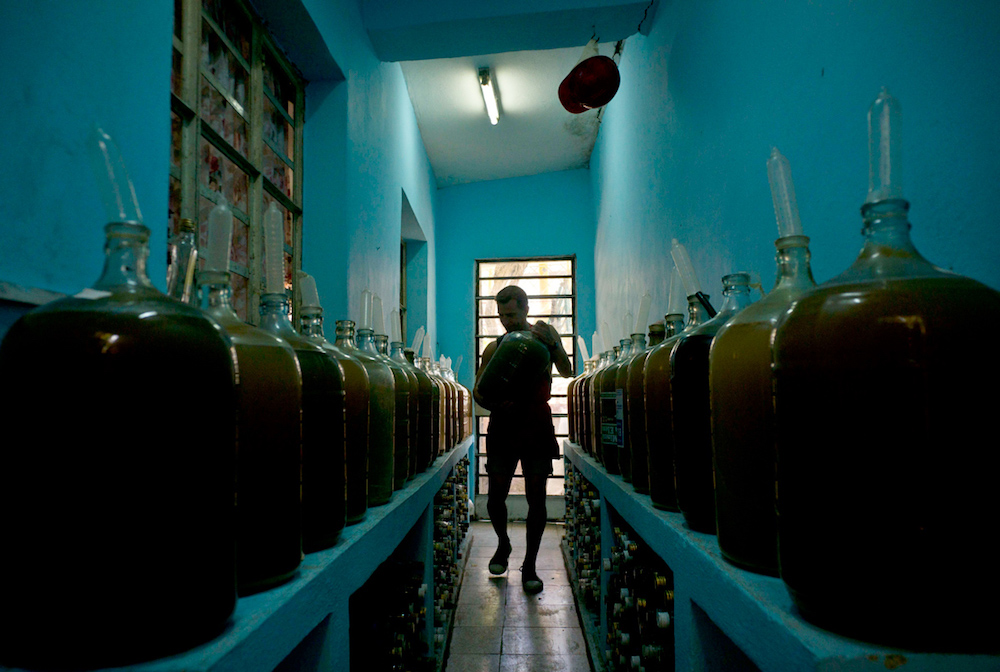The Secret to Cubans' Homemade Wine: Condoms

Cubans have found a homemade solution to making wine without high-tech fermentation tools: They use condoms.
Homemade wine is an affordable spirit for Cubans, where a bottle of imported wine in state-run liquor stores sells for at least half of the average person's monthly salary of $25, reported Associated Press. One backyard winemaker, Orestes Estevez, has hundreds of fruit-filled glass jugs capped with condoms. Estevez told the AP he uses the condoms to signal when the juices are ready to be bottled.
To ferment grapes into wine, yeast feeds on the sugars found in the fruit and carbon dioxide (CO2) is subsequently released, Kathleen Arnink, a viticulture (science of wine) and enology (study of wine) lecturer at Cornell University in Ithaca, New York, told Live Science. The gas inflates the condoms as the fruit ferments, and when the condoms become limp again, Estevez said they signal that fermentation is complete. [Photos: Amazing Microscopic Views of Italian Cocktails]
"Putting a condom on a bottle is just like with a man," Estevez told the AP. "It stands up, the wine is ready, and then the process is completed."
Estevez, who turned his backyard winemaking into a winery, told the AP he sells an average of 50 bottles a day for about 40 cents each. The tiny winery has become a neighborhood attraction, the AP reports, thanks to the affordable local vino and bizarre sight of condom-capped jugs of wine.
In commercial operations, winemakers use fermentation locks that allow the CO2 to escape while still sealing off the wine from oxygen, Arnink said. Winemakers monitor the sugar concentration of the wine during fermentation to determine when the process is complete.
Trapping CO2 in a condom does help protect the wine from oxygen, though waiting for the inflatable to deflate is not a precise measure of the fermentation process, according to Arnink. And though it may look strange, at-home winemakers have used inflatables, such as balloons, for their concoctions before.
Sign up for the Live Science daily newsletter now
Get the world’s most fascinating discoveries delivered straight to your inbox.
"I have seen balloons used, but anything that will fit on the neck of the carboy [wine jugs] and trap the gas would work," Arnink told Live Science in an email. "I guess manufacturing birth control has been more important in Cuba than making balloon animals, so they had more condoms available than balloons."
Though there are better tools available for winemaking, Arnink said using balloons or condoms is an acceptable method for a makeshift fermentation operation at home.
Original article on Live Science.










